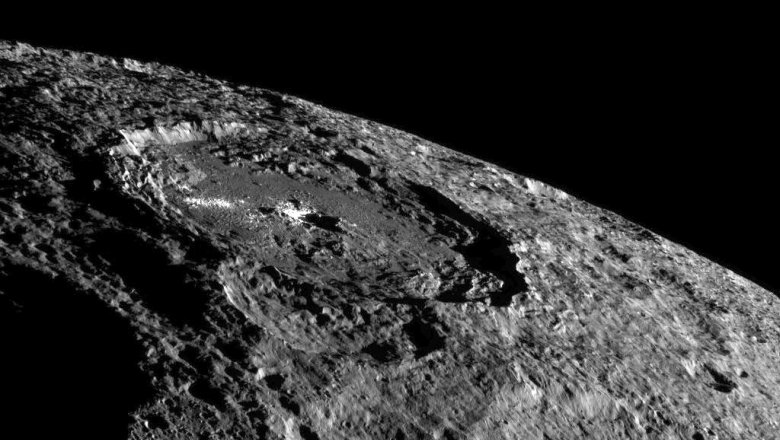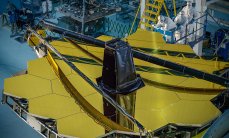NASA showed the profile of the crater Okkator
The photos show bright spots inside the crater Okkator, which consist of salts, and, according to scientists, there was the evaporation of water.

Space Agency NASA revealed new images of Ceres taken by Dawn probe. They show bright spots inside the crater Okkator, which consist of salts, and, according to scientists, there was the evaporation of water. About it reports a press-the release published on the website of the jet propulsion Laboratory of NASA.
The Dawn spacecraft arrived in orbit of Ceres on March 6 2015. During the execution of its core mission, which ended at the end of June 2016, the probe has collected tens of thousands of images of the dwarf planet.See also NASA Engineers have completed Assembly of the largest space telescope
NASA Engineers have completed Assembly of the largest space telescope
In July 2016, NASA announced the adoption of a programme of extended mission in which Dawn had to continue studying Ceres on new orbits. In September the probe was finished in orbit 385 kilometers above the surface of Ceres and began the ascent to high orbit (1460 kilometres). From there, the spacecraft made about 3000 photographs of the surface and spectra at an angle different from the previous orbits, and transmits the received data to Earth.
Space Agency NASA has released images of the impact crater Okkator, inside which there are the odd bright spots. Studies of the reflection spectra of the spots show that the main materials of which they consist, must be crystalline magnesium sulfate. On the ground that the substances meet two of mineral — hexahydrite (MgSO4⋅6H2O — shestibalny magnesium sulfate) and keseric (MgSO4⋅H2O — dnovotny magnesium sulfate). Scientists believe that the spot might remain after the dwarf planet collided with a meteor which “dug up” the surface and caused the rise of salt water.
The resolution of the obtained images is 140 meters per pixel. The diameter of the crater Okkator reaches about 92 miles, and its depth is estimated at 4 km.
Pictures that show Ceres in color, the usual human eye, derived from images obtained using red, green and blue filters.
The Dawn probe was launched in September 2007. In the framework of his scientific program he explored not only Ceres, but Vesta is one of the largest asteroids of the main asteroid belt. In November of this year, Dawn began the transition to sixth scientific orbit, the height of which will be 7,200 miles above the surface of Ceres. The maneuver should be completed in early December.
Ceres is the closest to the Sun dwarf planet, which is located in the main asteroid belt between Mars and Jupiter. In size it is superior to many of the major satellites of the planets of giants: Ceres contains almost a third (32 per cent) of the total mass of the belt, and its diameter is about 950 kilometers.
A dwarf planet has attracted attention of researchers, as it may be appropriate to create colonies. Observations show that its mantle may contain up to 200 million cubic kilometers of water, which is there in the form of ice.
Christina Ulasovich